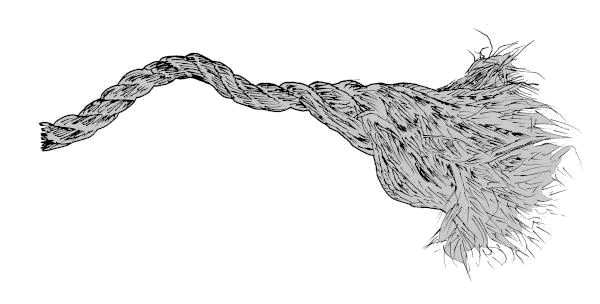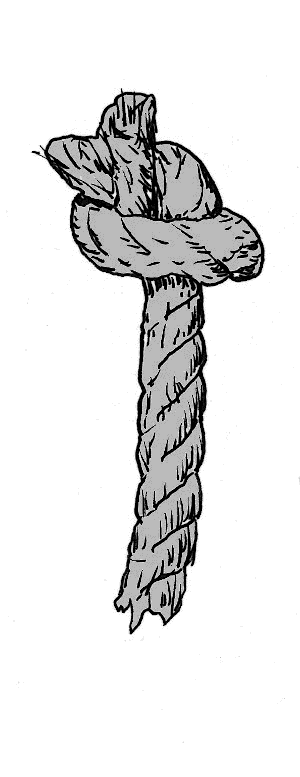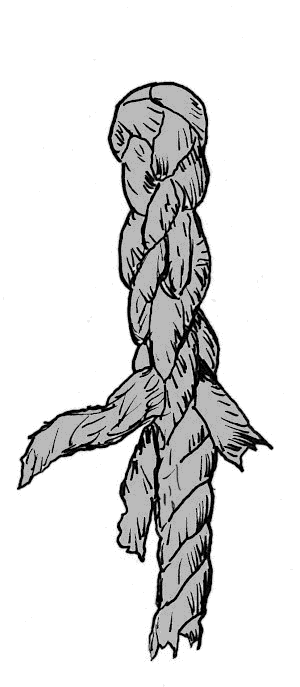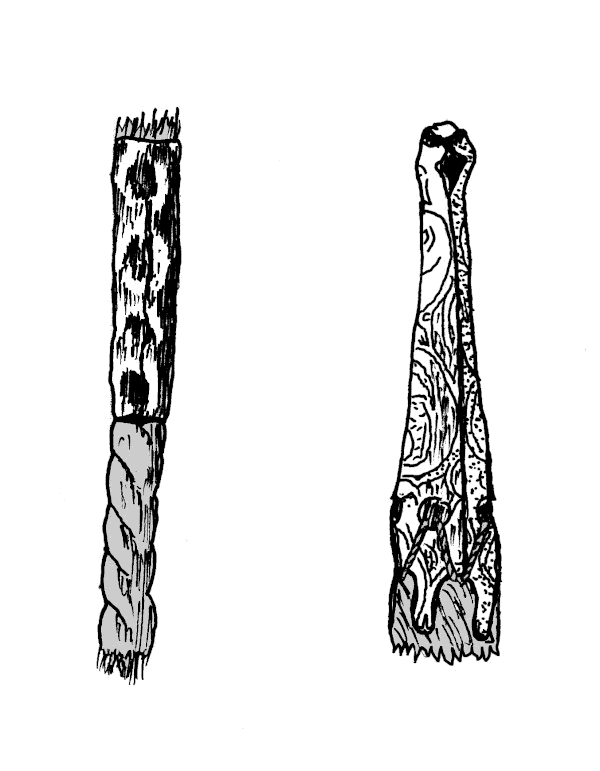
| Chapter 5 | Introduction | Chapter 7 |

|
The twisted structure of a rope keeps it together along its length. But the ends of a rope need special attention. The mere handling of a rope can cause the end to unravel. There are three common ways to prevent this: knotting, whipping, and clamping. One does not melt "real" rope. The method you use depends if you need it to be permanent or temporary, and the cost involved.
Here are a few ways to keep a rope end from fraying.

|

|

|
| (A) Simple Knot ABOK #1410 |
(B) Footrope Knot ABOK #696 |
(C) Back Splice ABOK #2813 |

|

|

|
| (D) Tied with Yarn ABOK #1188 |
(E) Standard Whipping ABOK #3442 |
(F) Sailmakers Whipping ABOK #3448 |
The first way of finishing a rope uses only the rope itself, no other material. The simplest temporary ending is to tie an overhand, or thumb, knot at the end. Figure 6.2 (A), above. This keeps all the strands together until you need to make a permanent end. If you've just made a new rope, and don't know where or when you are going to use it, an overhand knot is perfectly fine. But if the rope is on your camping gear, the rigging of your ship, or on your favorite horse's trappings, you need something more permanent. The footrope knot (B), and the backsplice (C) will take a few minutes to make, but will not unravel under any normal use. Because knots are wider than the rope, they don't thread through holes. Sometimes that's what you want. If your life is hanging from a rope, you don't want it to pull through the anchor point. That's why the footrope knot is part of a class called "stopper" knots.
Some authorities[040] say whippings should be wrapped against the lay of the rope. If you have a Z twist rope, your whipping should be in the S direction. But other people[035] [604] insist that whippings should be done with the lay. Be sure you know your customer's preference, as this is generally an article of faith, and not to be questioned.[496]

|
The aiglet in Figure 6.3 (left) is a simple strip of brass that has been wrapped around the cord, then crimped closed. The aiglet on the right is made from brass, stamped with a pattern, shaped into a cone, with its tip folded over, then crimped and sewn onto the end of the cord.
A rural ropemaker in Colonial Virginia would probably not keep the thin brass needed to make even the simplest aiglets. These are fancy fittings for fancy clothes.
| Chapter 5 | Introduction | Chapter 7 |
| Colophon | Contacts |